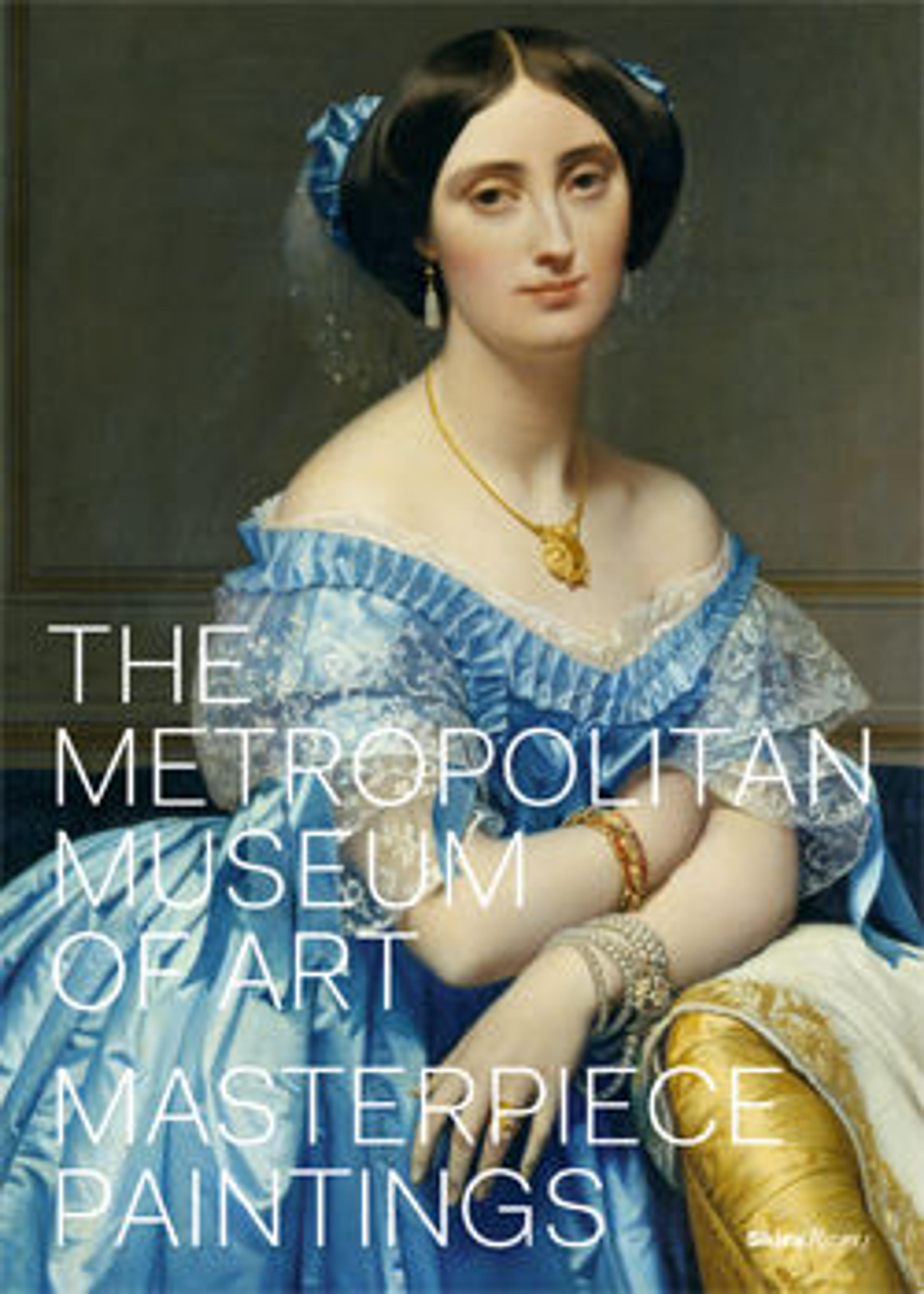Terracotta loutrophoros (ceremonial vase for water)
On the body, obverse, woman with attendant in naiskos (shrine) flanked by youth and women
Reverse, woman in naiskos flanked by youths and women
On the shoulder, obverse, Eros with alabastron and mirror within foliage
Reverse, head of a woman within foliage
This imposing and beautifully executed vase, together with its counterpart exhibited here, is of exceptional interest for the architectural structure on the obverse. A small naiskos, rendered with three columns, encloses a woman, her maid who holds out a small casket, and a metal loutrophoros. Between the level on which they stand and the podium for the shrine are two panels with a pair of confronted lions. The podium itself consists of an upper frieze of triglyphs, alternating with metopes showing Greeks fighting Amazons. The lower element is covered with tendrils enclosing a female head. Although naiskoi are common on Apulian vases, the complexity and elaboration here are unusual. The unresolved question is to what extent the representation reflects actual funerary structures and the limestone reliefs
familiar especially from Tarentum.
Reverse, woman in naiskos flanked by youths and women
On the shoulder, obverse, Eros with alabastron and mirror within foliage
Reverse, head of a woman within foliage
This imposing and beautifully executed vase, together with its counterpart exhibited here, is of exceptional interest for the architectural structure on the obverse. A small naiskos, rendered with three columns, encloses a woman, her maid who holds out a small casket, and a metal loutrophoros. Between the level on which they stand and the podium for the shrine are two panels with a pair of confronted lions. The podium itself consists of an upper frieze of triglyphs, alternating with metopes showing Greeks fighting Amazons. The lower element is covered with tendrils enclosing a female head. Although naiskoi are common on Apulian vases, the complexity and elaboration here are unusual. The unresolved question is to what extent the representation reflects actual funerary structures and the limestone reliefs
familiar especially from Tarentum.
Artwork Details
- Title: Terracotta loutrophoros (ceremonial vase for water)
- Artist: Attributed to the Metope Painter
- Period: Late Classical
- Date: 3rd quarter of the 4th century BCE
- Culture: Greek, South Italian, Apulian
- Medium: Terracotta; red-figure
- Dimensions: 34 3/4 in. (88.3 cm)
- Classification: Vases
- Credit Line: Purchase, The Bernard and Audrey Aronson Charitable Trust Gift, in memory of her beloved husband, Bernard Aronson, 1995
- Object Number: 1995.45.1
- Curatorial Department: Greek and Roman Art
Audio
1087. Terracotta loutrophoros (ceremonial vase for water)
0:00
0:00
We're sorry, the transcript for this audio track is not available at this time. Please email info@metmuseum.org to request a transcript for this track.
More Artwork
Research Resources
The Met provides unparalleled resources for research and welcomes an international community of students and scholars. The Met's Open Access API is where creators and researchers can connect to the The Met collection. Open Access data and public domain images are available for unrestricted commercial and noncommercial use without permission or fee.
To request images under copyright and other restrictions, please use this Image Request form.
Feedback
We continue to research and examine historical and cultural context for objects in The Met collection. If you have comments or questions about this object record, please complete and submit this form. The Museum looks forward to receiving your comments.
